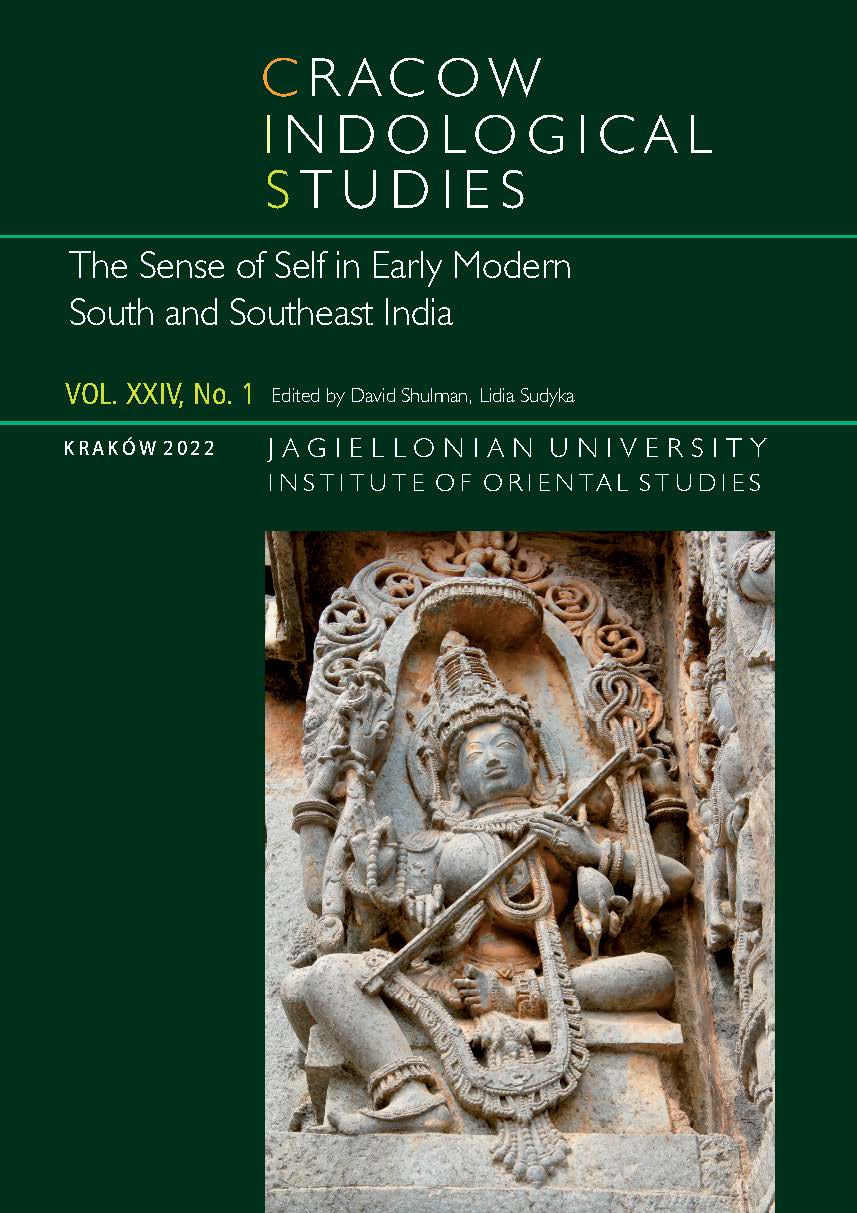The Many Selves of an Actor
The Many Selves of an Actor
Perceptibility of Second-order Characters in the Naṭāṅkuśa and Non-dualist Theories of Cognition
Author(s): Dimitry ShevchenkoSubject(s): Politics / Political Sciences, Language and Literature Studies
Published by: KSIĘGARNIA AKADEMICKA Sp. z o.o.
Keywords: Kūṭiyāṭṭam, NaṭāṅkuAdvaita Vedānta; Kashmiri Śaivism; pakarnnāṭṭam; Dharmarāja; Somānanda; Vedāntaparibhāṣa; Śivadṛṣṭi; sarvasarvātmakatvavāda
Summary/Abstract: This article explores artistic innovations in Kūṭiyāṭṭam theater through the lens of critique developed in the Naṭāṅkuśa—a polemical treatise composed, perhaps, in the 15th century Kerala. The focus is on the Naṭāṅkuśa’s fierce disapproval of the performance of multiple roles by an actor dressed as one and the same character—for example, switching from the role of Hanumān to that of Rāma, while still in Hanumān’s costume and make-up. The author of the Naṭāṅkuśa utilizes epistemological arguments to demonstrate the impossibility of accommodating more than one character in a single actor’s mind. Nor can a spectator have a stable cognition of the second- order characters. The fact that the author attributes to the opponent— a Kūṭiyāṭṭam performer—a non-dualist theory of cognition, suggests that the theory of Kūṭiyāṭṭam was inspired by Advaita Vedāntin and the non-dualist Śaiva epistemological presuppositions.
Journal: Cracow Indological Studies
- Issue Year: 24/2022
- Issue No: 1
- Page Range: 111-130
- Page Count: 20
- Language: English

